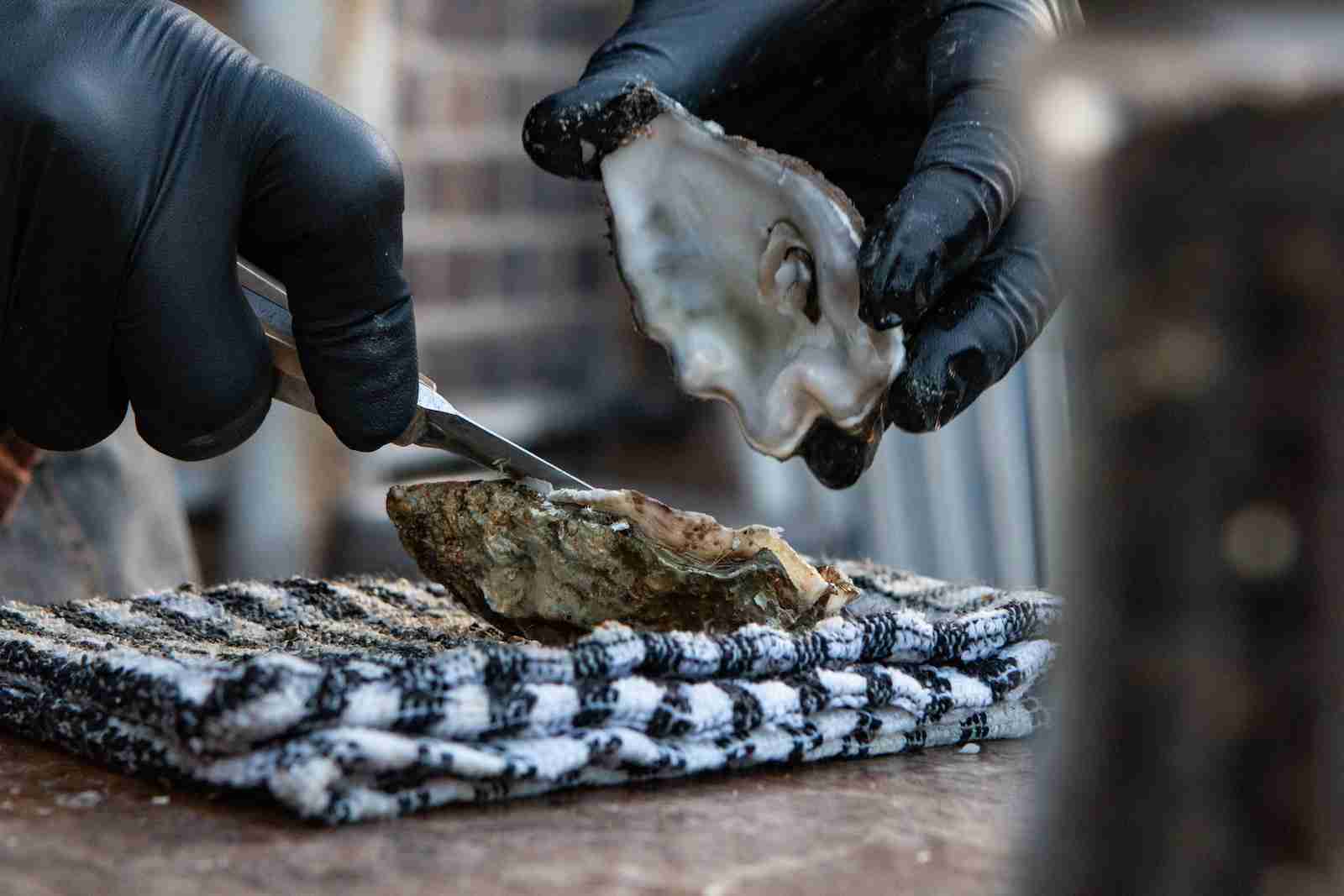25 Fun Facts About Oysters: The Untold Story of Oysters
1. Oysters can change their gender multiple times during their life.
Oysters have a unique talent they can change their gender multiple times during their life. Why do they do this? Well, it’s all about survival and making sure there are enough baby oysters.
By switching genders, an oyster can mate with multiple partners, increasing the odds of successful reproduction. It’s nature’s clever way to keep the oyster population going strong.
2. A single oyster filters up to 50 gallons of water a day.
One oyster has the power to filter a whopping 50 gallons of water each day. How does it do this? The oyster sucks in water and filters out tiny particles and algae to eat. In the process, it also removes pollutants and excess nutrients from the water.
So, not only do oysters get their food, but they also help clean the water making it a better place for other marine life too.
3. They’re one of the few animals that humans eat both raw and alive.
Oysters are unique in that they’re one of the few animals people eat raw and alive. Most foods get cooked, but with oysters, many folks enjoy them fresh out of the shell.
The reason? Oysters taste better and are safer to eat when they’re alive, offering a flavor that’s as close to the ocean as you can get.
4. Some oysters produce pearls, but they are generally not the ones we eat.
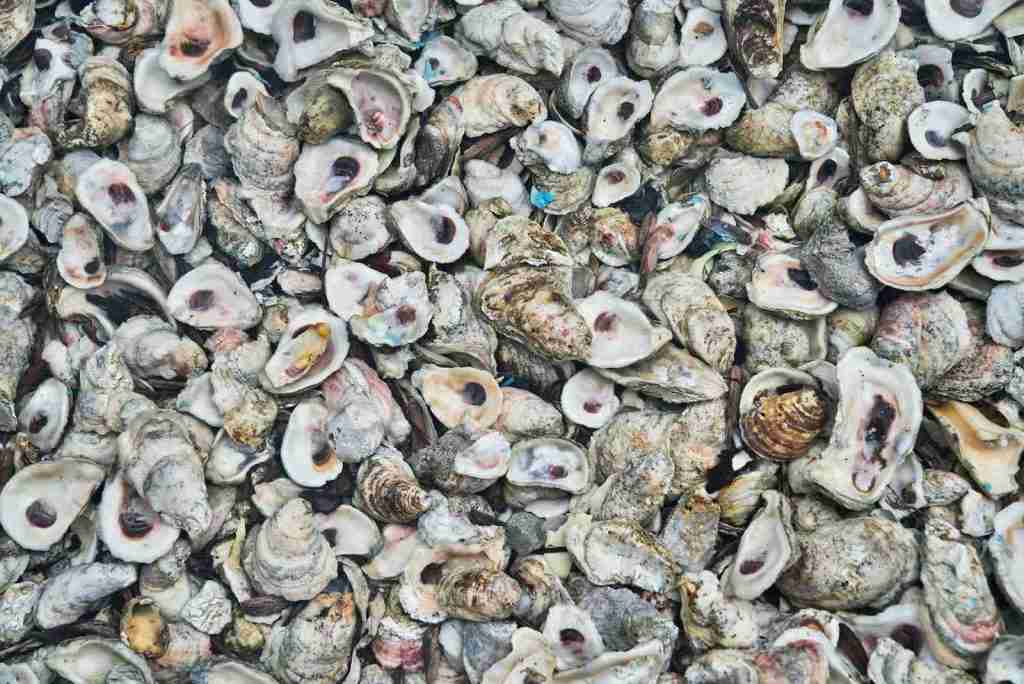
You might think every oyster can produce a pearl, but that’s not the case. The oysters we usually eat, like the Atlantic oyster, generally don’t make pearls. Pearl oysters, which belong to a different family, are the ones that are experts at making these precious gems.
So, if you’re slurping down an oyster at dinner, chances are it’s not the pearl-producing type.
5. Oyster reefs can act as natural breakwaters, reducing coastal erosion.
Oyster reefs are like nature’s architects for coastlines. They form strong, natural barriers in the water that can help reduce coastal erosion.
When waves hit these reefs, their energy dissipates, protecting the shore from getting washed away. So, oysters aren’t just good to eat; they’re good for our beaches too.
6. There are five main species of oysters, each with a distinct flavor.
Did you know there are five main species of oysters, each with its unique flavor?
They are Atlantic, Pacific, Kumamoto, Belon, and Olympia.
Just like wines from different regions taste distinct, these oyster types offer a range of flavors from the full-bodied taste of the Atlantic to the nutty notes of the Olympia.
7. Oysters have been consumed by humans for at least 4,000 years.
Oysters have been a part of the human diet for a very long time around 4,000 years, to be exact. Ancient Romans were big fans, and shell mounds from prehistoric times show that early humans enjoyed them too.
It’s pretty fascinating to think that this love for oysters has stood the test of time.
8. They have no central nervous system.
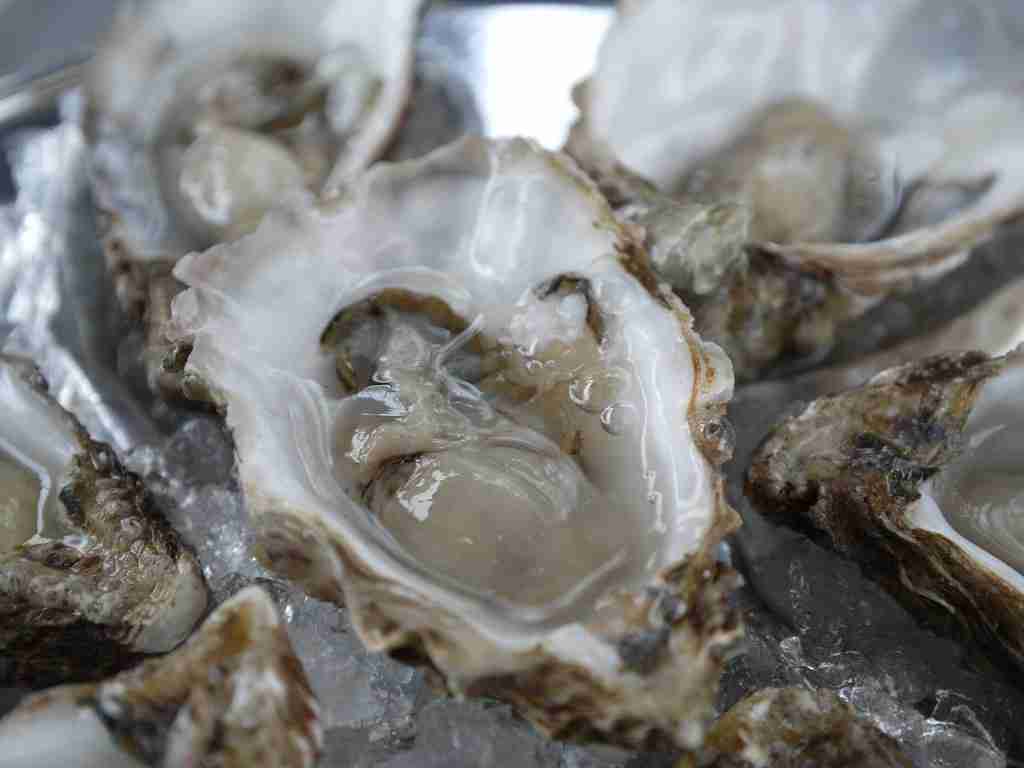
Oysters may not have a central nervous system, but they do have a heart, stomach, kidneys, and intestines. What’s more, they possess ganglia nerve clusters that allow them to sense their environment to some extent.
While the scientific community hasn’t reached a consensus, there’s a possibility that oysters could experience pain, especially when they’re harvested or farmed.
9. Ostrea-phobia is the fear of oysters.
There’s a term for people who are scared of oysters: Ostrea-phobia. While it might seem odd to some, this fear can be quite real for those who experience it.
Fears like these often have psychological roots and can be triggered by texture, appearance, or even a bad experience with oysters in the past.
10. Some oysters “clap” to expel sediment from their shells.
Some oysters have a unique way to keep their homes clean: they “clap” their shells. By quickly opening and closing their shells, they can expel unwanted sediment and debris.
It’s a smart, natural way for them to maintain a comfortable living environment.
11. Oysters can live up to 20 years in the right conditions.
Oysters have a pretty long lifespan if conditions are right; some can live for up to 20 years. This longevity is often affected by factors like water quality, temperature, and the availability of food.
It’s interesting to think that an oyster you eat could’ve been around for decades.
12. The largest oyster ever recorded weighed 1.3 kg.
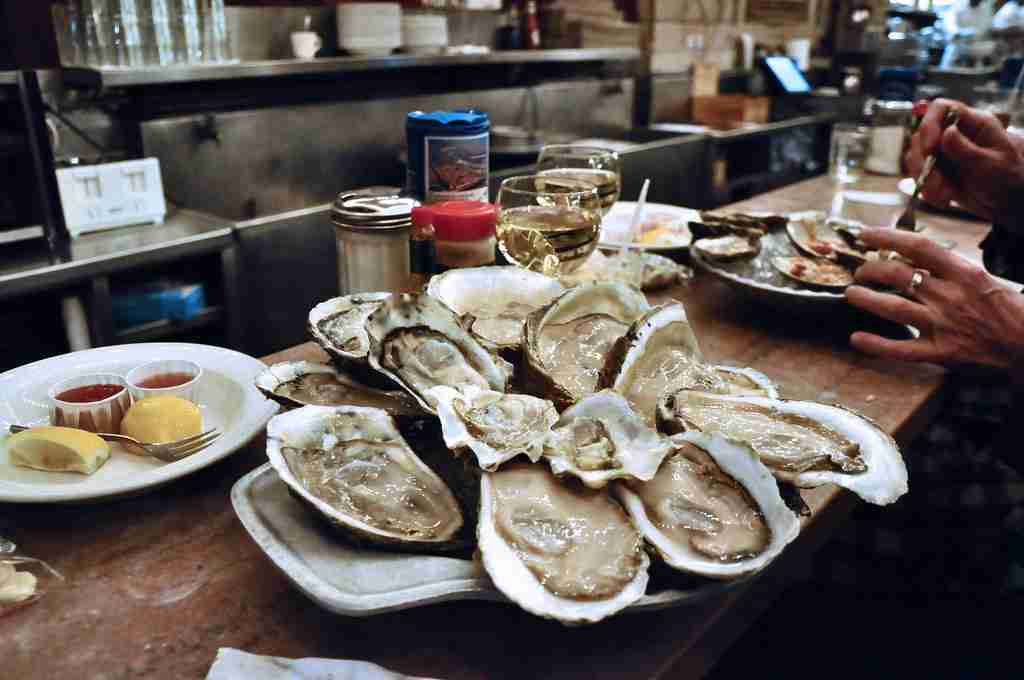
One of the heaviest oysters ever discovered tipped the scales at 1.3 kg (2.86601 pounds). Found in Denmark’s Wadden Sea in 2013, this enormous specimen wasn’t officially recognized by Guinness World Records but is still considered one of the largest.
An American visitor, Richard Mesce, made this remarkable find during his trip to the Wadden Sea Centre.
13. Oysters spawn when water temperatures reach 68°F (20°C).
Oysters have a specific trigger for when it’s time to reproduce water temperature. Once the water hits between 20°C to 30°C, it signals to the oysters that it’s time to spawn.
This is crucial for the survival of the species, as it ensures that conditions are optimal for the next generation.
14. The largest oyster-producing region in the world is Chesapeake Bay in the United States.
Chesapeake Bay in the United States holds the title of being the world’s largest oyster-producing region.
According to a recent update from Maryland’s Department of Natural Resources, the Bay had around 400 million market-size oysters in 2020.
It’s a significant number that highlights the importance of this region for oyster farming.
15. They are a rich source of zinc, essential for immune system health.
Oysters are more than just a tasty treat; they’re also a powerhouse of nutrients. One of the key elements they provide is zinc, which is crucial for a healthy immune system.
But that’s not all; the high levels of zinc in oysters can also be great for your skin.
16. Oysters are used in scientific research to study water quality and pollution effects.
Oysters are not just good for eating they’re also important in the field of science. Researchers often use them to study water quality and the impact of pollution.
Their filtering capabilities and sensitivity to environmental changes make them excellent indicators of water health.
17. Oysters contain both hemoglobin and myoglobin, uncommon in invertebrates.
Oysters have an unusual feature for invertebrates: they contain both hemoglobin and myoglobin. Hemoglobin is the protein that carries oxygen in the blood, while myoglobin stores oxygen in muscle tissues.
Having both allows oysters to efficiently store and transport oxygen, which is a big advantage for their survival in varying water conditions.
18. The presence of an oyster reef can double the fish population in that area.
Oyster reefs are more than just clusters of shellfish; they’re also natural fish magnets. The presence of an oyster reef can double the local fish population.
These reefs offer a safe habitat and abundant food resources, making them ideal spots for fish to thrive.
19. Oyster shells have been used in arts and crafts for centuries.
Oyster shells have been prized as artistic treasures for centuries. Their natural intricacies and iridescent qualities make them ideal for a range of creative pursuits. Artists have meticulously crafted delicate shell mosaics, arranging crushed oyster shells to form intricate designs.
In jewelry, polished oyster shell fragments become captivating ornaments. Furthermore, oyster shells have adorned architecture as embellishments and found their place as inlays in fine furniture
20. Oyster beds create habitats that benefit other marine life.
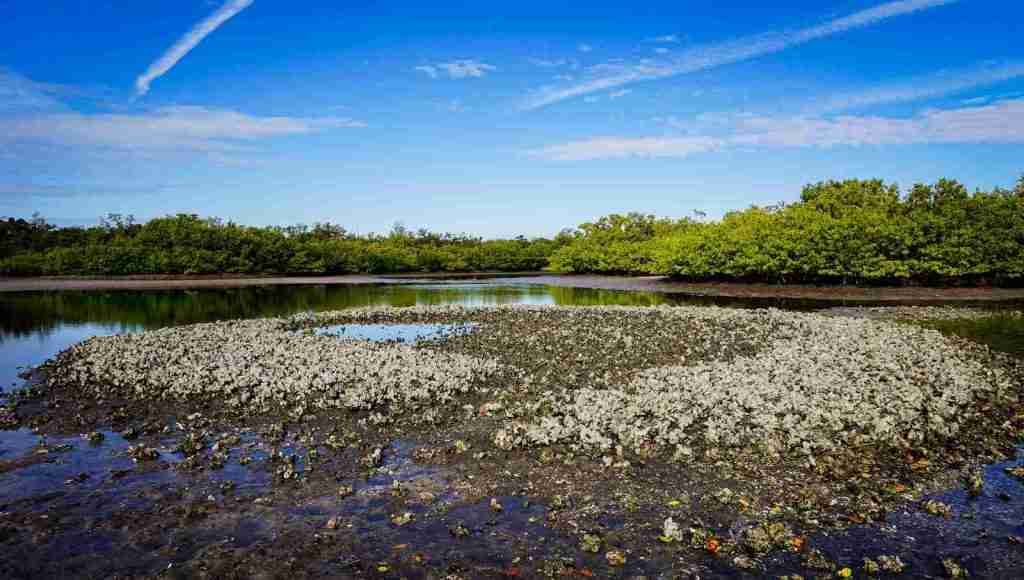
Oyster beds are like underwater cities that provide a boost to marine biodiversity. They offer nooks and crannies for smaller sea creatures to hide, and their filtering action helps maintain water quality, benefiting all kinds of marine life in the area.
21. Can oysters be out of water?
Oysters have a surprising ability to stay alive outside of water for an extended period. Although commonly believed to have just a week of shelf life, they can survive for more than a month if stored in a cold place.
When they start to expire, the muscle that keeps their shell closed weakens, leading to the loss of vital fluids.
22. Oysters Natural source of taurine, an amino acid.
Oysters are a natural source of taurine, an amino acid often found in energy drinks. Taurine is essential for various biological processes, including the regulation of minerals within cells and the function of certain neurotransmitters.
23. Oysters have three-chambered hearts that can pump colorless blood.
An oyster’s heart is unique it has three chambers and pumps colorless blood. This circulatory system may be different from what we’re used to, but it gets the job done, supplying the oyster’s tissues with the nutrients they need.
24. Oyster stout is a type of beer brewed with Oyster shells.

If you’re a fan of both oysters and beer, you might want to try oyster stout. It’s a type of beer brewed with oyster shells, and it offers a unique blend of flavors. It’s an example of how versatile oysters can be, extending their influence even into the world of beverages.
25. What do oysters eat?
Oysters feed on microscopic algae and phytoplankton present in the water. They use a filtering mechanism to draw water over their gills, capturing these small food particles.
Although occasionally labeled as bottom feeders, they shouldn’t be confused with detritivores that eat decaying organic material.
FAQs:
Yes, oysters are good for you and offer significant nutritional value. They are rich in protein, low in calories, and a great source of essential nutrients like zinc, vitamin B12, and omega-3 fatty acids. Consuming oysters can support immune function, brain health, and cardiovascular well-being.
No, oysters are not vegan. They are classified as mollusks and are considered animals. Vegans abstain from consuming any animal products, so oysters do not fit within a vegan diet.
Yes, oysters are typically alive when you purchase them fresh. They are often consumed shortly after being opened, which is when they die. It’s crucial to ensure that an oyster is alive before consuming it to reduce the risk of foodborne illness.
Pearls are primarily found in oysters belonging to the Pinctada genus, which are saltwater oysters. Not all oysters produce pearls, and even among those that do, it’s a rare occurrence. Pearl oysters are specifically cultivated in pearl farms for this purpose. Freshwater mussels can also produce pearls but they are generally not as lustrous or valuable as those from saltwater oysters.
The taste of oysters can vary depending on their type and where they were harvested, but generally, they have a briny, salty flavor with undertones of sweetness and minerality. Some describe the taste as a mix of saltwater, and seaweed, and some even note a metallic or buttery finish. The texture is usually soft and slippery.

